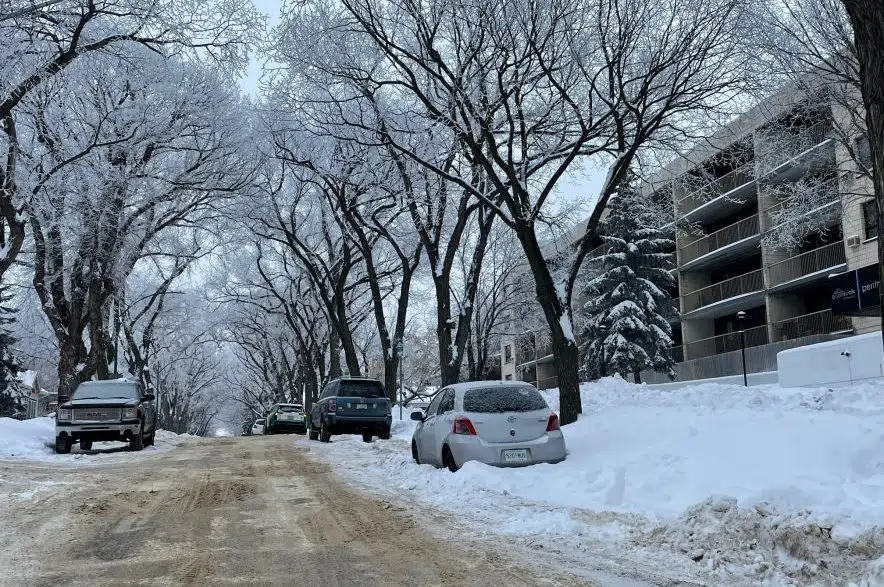The City of Saskatoon is reflecting on last winter’s major snowfall and proclaiming its emergency response to be a triumph in its first use.
A report offers a summary of the first activation of the city’s Roadways Emergency Response Plan for Extreme or Unusual Snow Events — approved by the city in September of 2021 — which happened after two massive back-to-back snowfalls in December 2022.
The plan was developed after the enormous November 2020 blizzard that hit Saskatoon.
The plan prioritizes an immediate, planned response to such significant winter weather events to help ensure safety and allow for movement again on Saskatoon streets and sidewalks.
Last December, 34 centimetres of snow brought Saskatoon to a halt just after the year’s holiday festivities. It was the fifth snow event of the season, which the city’s report noted to be an above-average number of snow events for that time of year.
Previous storms in the season had resulted in 40 to 50 cm of snowfall, which the city’s report said left no snow storage capacity in the median, parking lanes and boulevards along most priority streets to hold more snow without narrowing driving lanes and impacting safety.
According to the city’s report, the conclusion of the emergency weather response in December offers lessons in improvement while showcasing the success of the plan.
Within eight days of activating the plan, snow grading had been completed along all streets in Saskatoon — ahead of the plan’s 10-day target. Snow removal for Priority 2 and 3 streets was finished within five weeks, “the fastest this work has ever been completed,” according to a City of Saskatoon news release.
It took nine weeks to complete all the snow removal work.
Goran Saric, the city’s director of roadways, fleet and support, said the response to the late 2022 snowfall showed the city’s commitment to safety and well-being.
“The City of Saskatoon remains steadfast in its dedication to providing efficient services while adapting and improving to better serve its citizens,” he said in the release.
The report shared that 102,000 truckloads of snow were removed from Saskatoon streets as a result of the storm, with 1.4 million cubic metres of snow stored at three different snow management facilities — an amount about 400 times the size of an Olympic swimming pool and four times the quantity of snow stored at those facilities in the years leading up to 2020.
A typical day of snow removal included 150 haul trucks, 32 graders, 18 loaders and more equipment. Crew days numbered about 500 removing snow piles on local streets.
Additional resources were provided by 27 contracting companies.
The city report noted several improvements on its 2020 storm response, including the approved emergency response plan, allowing the response team to clearly understand the scope of the work that needed to be done and quickly act; assigning additional capacity to the core response team early for better resourcing and co-ordination; more inspectors, better contract terms and clear quality requirements; and sequencing neighbourhoods for residential snow removal at a lower cost.
The storm response also resulted in lessons for the city. The report noted that signs indicated restricted parking were effective but needed to be clearer on time limits for residents. Additional snow grading capacity was needed, and more sidewalk clearing is an issue brought up by more than half of city residents who took a public survey on the city’s snowfall response.
Saric called the successful handling of the situation a testament to the city’s commitment to meet challenges head on.
“City crews, contractors and management personnel worked extensive overtime,” the report stated.
The total cost of the 2022-23 emergency snow response was $18 million, with 90 per cent of that cost for the citywide snow removal phase. It’s expected payment of that bill could take as long as a decade for the city.
The report is to be presented to Saskatoon city council’s Standing Policy Committee on Transportation on Tuesday.











